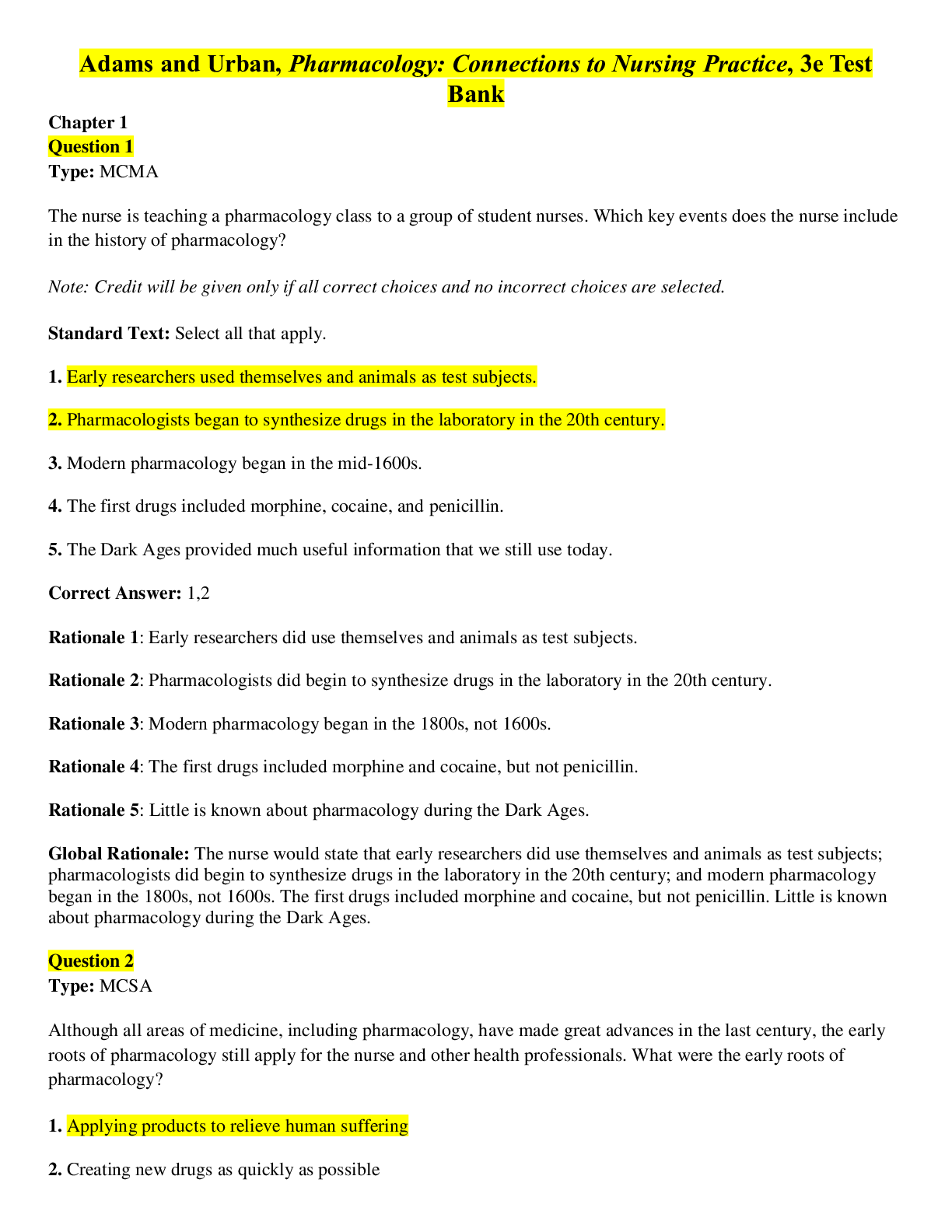Biology > QUESTIONS & ANSWERS > Arizona State University BIO 302 Fall 2019 Exam I All Cancer (All)
Arizona State University BIO 302 Fall 2019 Exam I All Cancer
Document Content and Description Below
TRUE AND FALSE (2 pts each/ 50 pts total) 1. Death from cancer is most commonly a consequence of metastasis. ANSWER: TRUE 2. The tumor characteristic that is scored based on how closely its micros... copic appearance resembles the tissue of origin is known as the stage. ANSWER: FALSE 3. Chemotherapy and radiation therapy kill both normal and tumor cells. ANSWER: TRUE 4. Mutations predisposing to cancer that are passed from parent to offspring are known as germline mutations. ANSWER: TRUE 5. The term that is used to designate the anatomic extent of tumor spread when a cancer is diagnosed (discovered) is grade. ANSWER: FALSE 6. The single most common environmental agent causally related to cancer death worldwide is UV radiation. ANSWER: FALSE 7. A permanent change in the nucleotide sequence of DNA is called a mutation. ANSWER: TRUE 8. The acquisition of additional mutations in an expanding (proliferating) clone of cells that have undergone initiating mutation in a cancer-causing gene is known as promotion. ANSWER: FALSE 9. The goal of screening is to detect disease in at-risk populations, before any signs or symptoms of cancer are present. ANSWER: TRUE 10. The most common form of cancer in the USA is skin cancer. ANSWER: TRUE 11. The most common cancer killer in the USA is lung cancer. ANSWER: TRUE 12. Most cancer in the world can be prevented. ANSWER: TRUE 13. Only malignant neoplasms can metastasize. ANSWER: TRUE 14. Only malignant neoplasms can cause death of a patient. Answer: FALSE 15. A cancer screening test that is 100% specific is negative in every individual who does not have cancer. ANSWER: TRUE 16. The likelihood that an individual with a positive screening test for cancer truly has cancer is known as the negative predictive value of the test. ANSWER: FALSE 17. A cancer screening test that is both 100% sensitive and 100% specific will accurately identify all individuals with and without cancer. ANSWER: TRUE 18. For most cancers, there are no effective screening tests. ANSWER: TRUE 19. Age is an example of causal risk factor for developing cancer. ANSWER: FALSE 20. No form of cancer therapy is devoid of side effects. ANSWER: TRUE 21. Cancer-causing mutations are significant because they ultimately lead to abnormal changes in cell function and behavior. ANSWER: TRUE 22. Smoking has been known to cause cancer for more than half a century. ANSWER: TRUE 23. Grade is the dominant prognostic factor for carcinomas. ANSWER: FALSE [Show More]
Last updated: 1 year ago
Preview 1 out of 107 pages
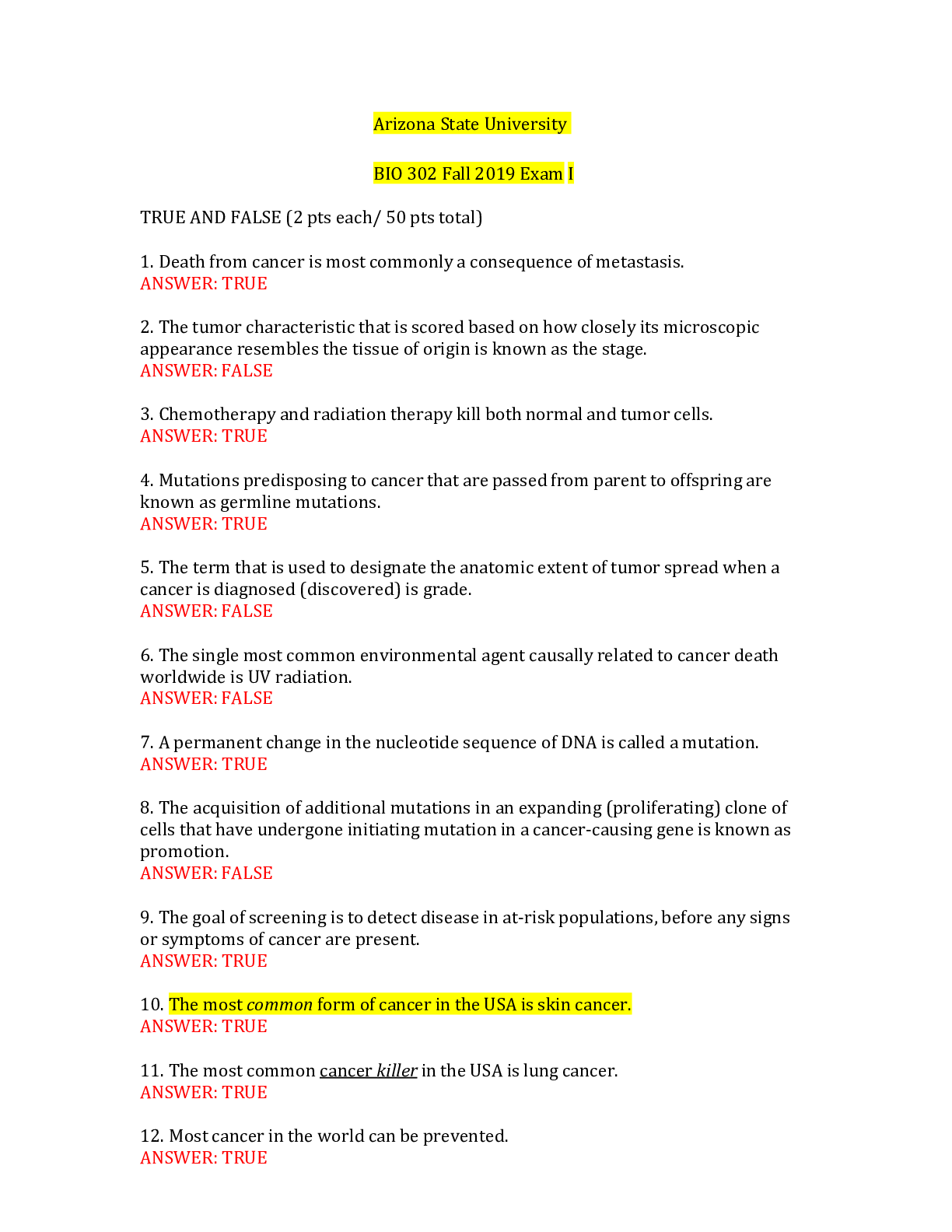
Reviews( 0 )
Document information
Connected school, study & course
About the document
Uploaded On
Apr 08, 2021
Number of pages
107
Written in
Additional information
This document has been written for:
Uploaded
Apr 08, 2021
Downloads
0
Views
57

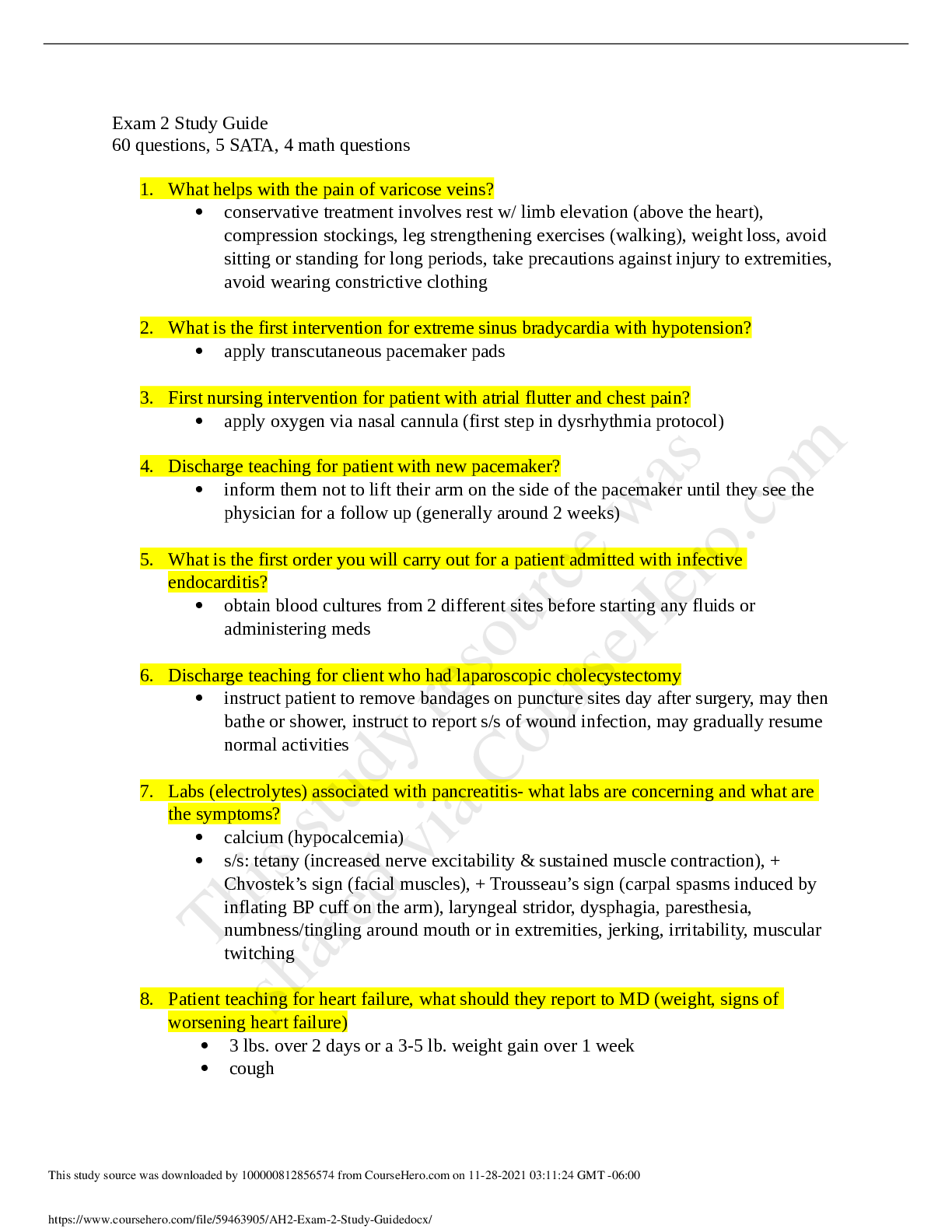
.png)
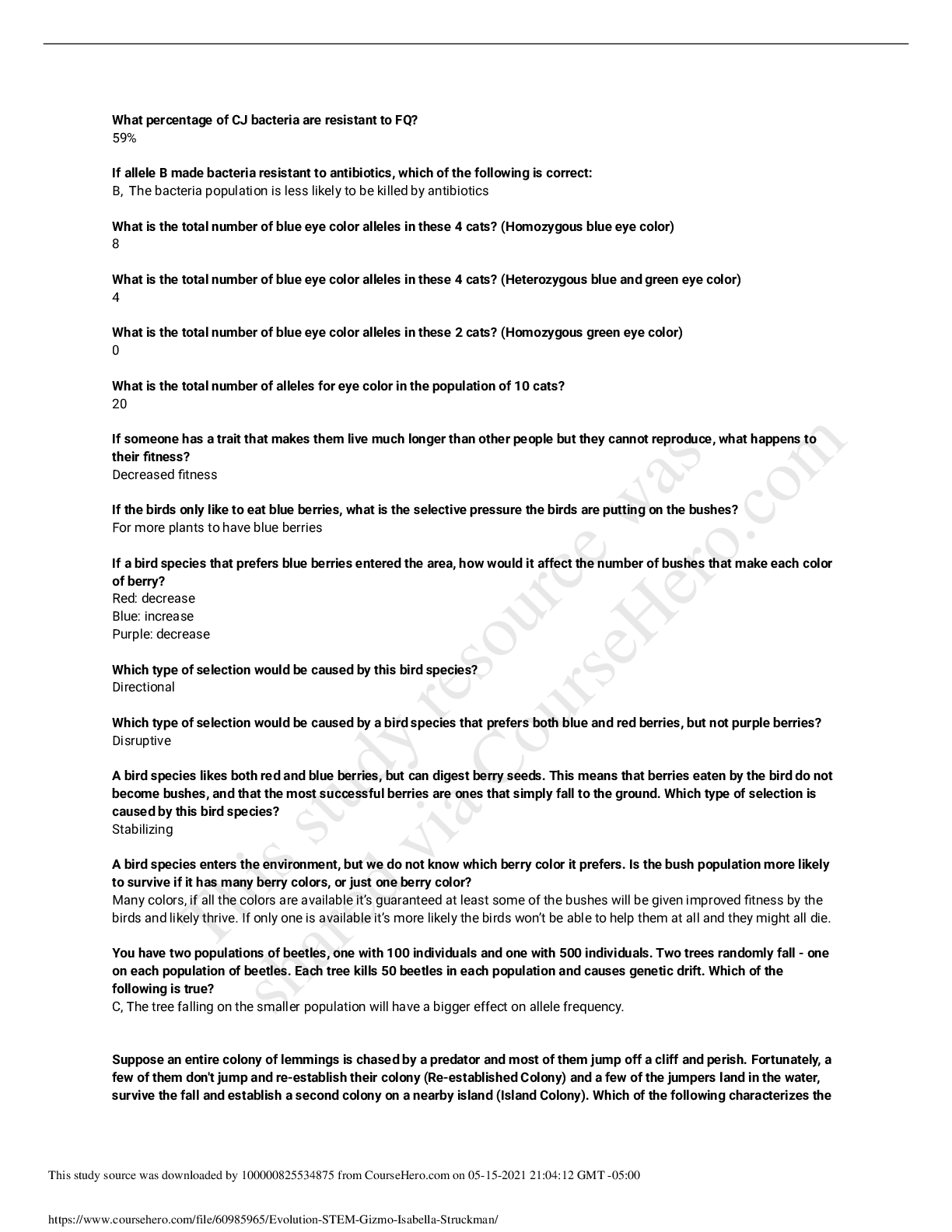
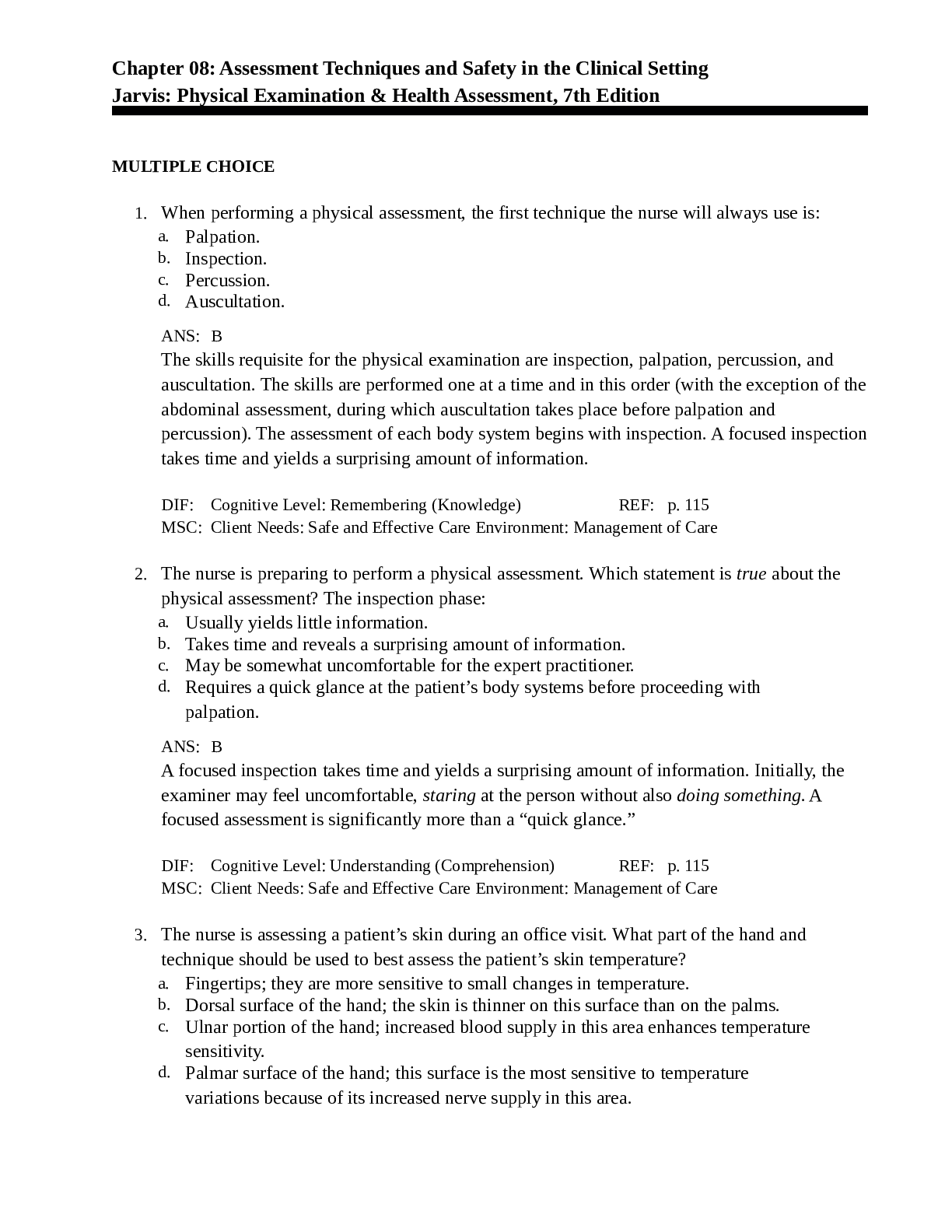
.png)
.png)

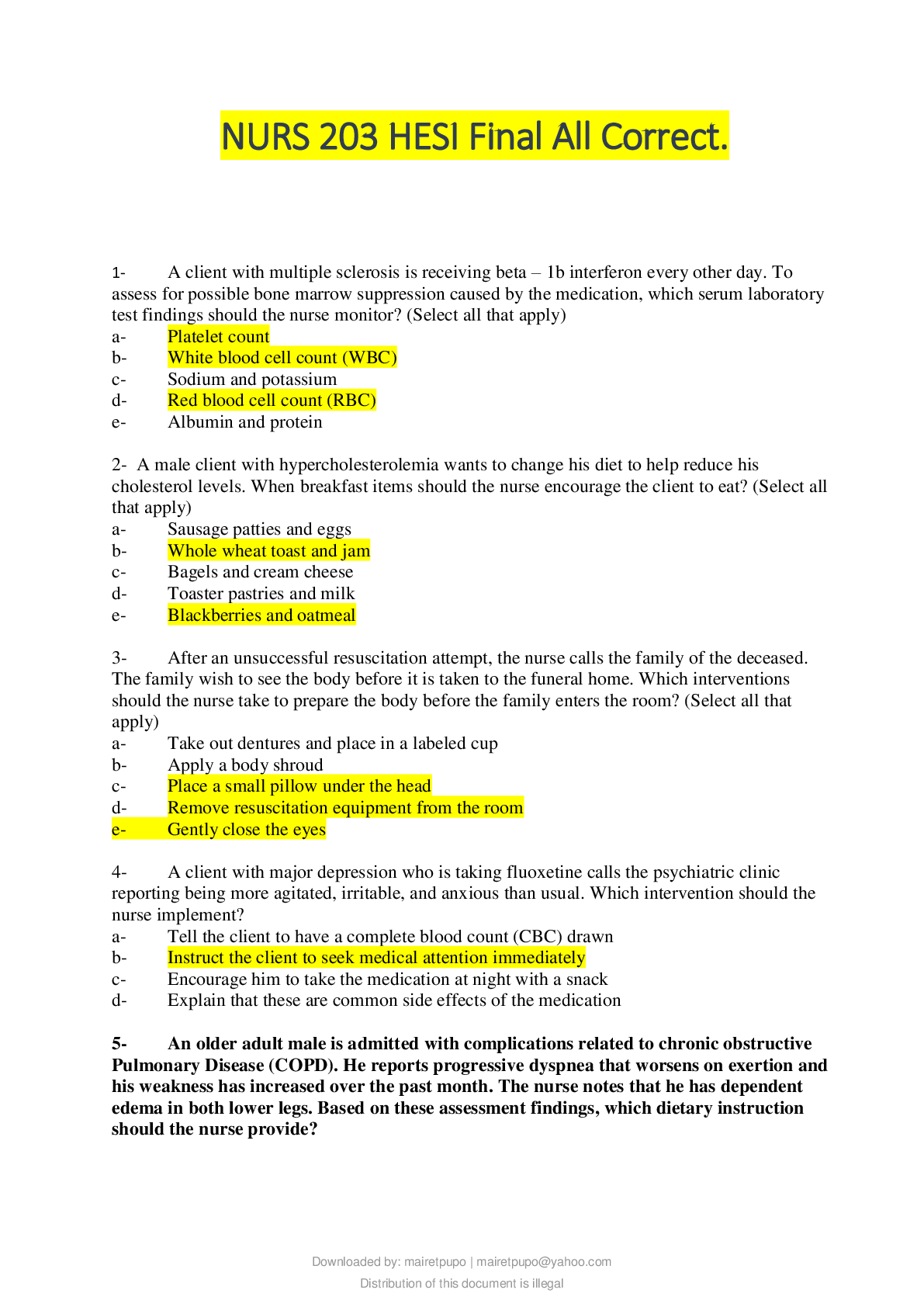


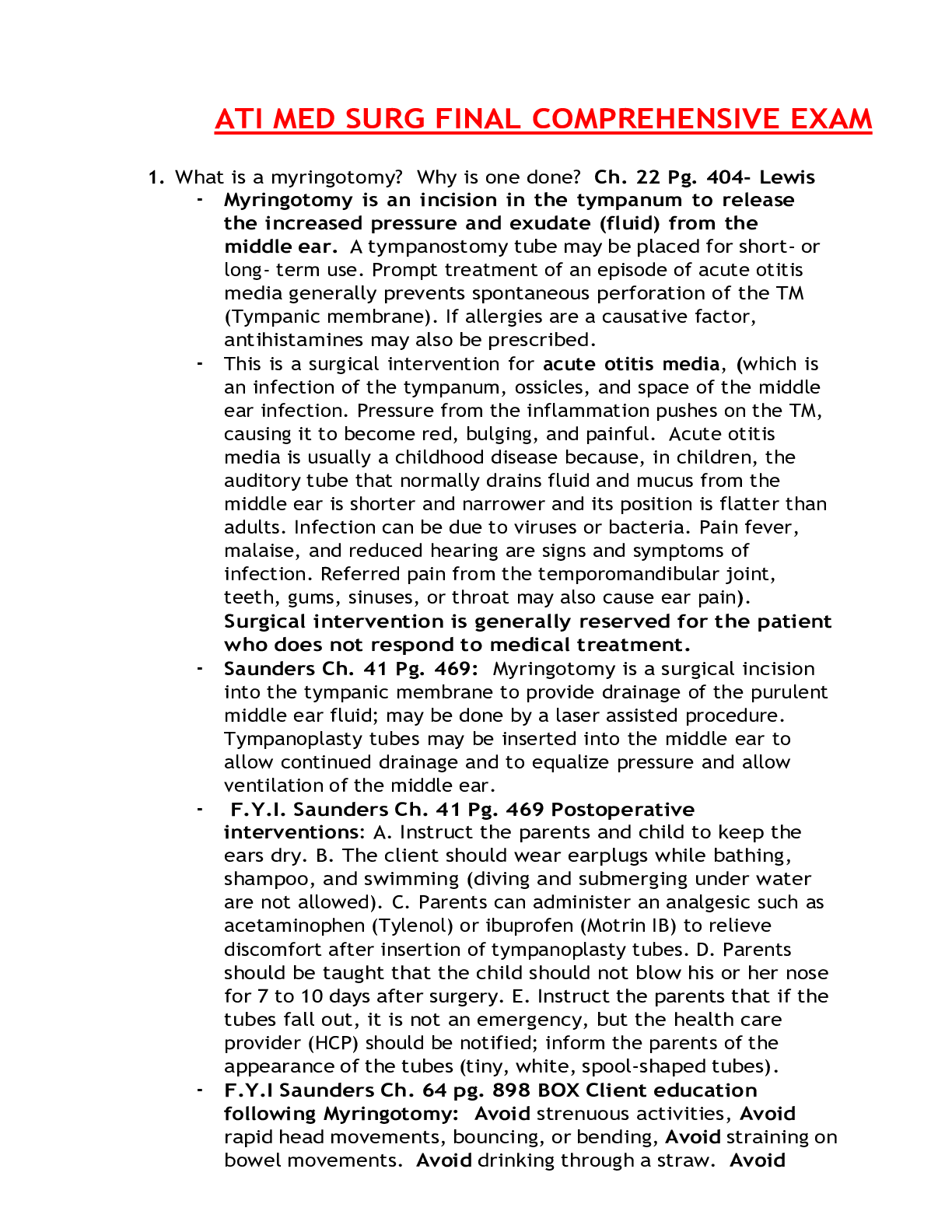
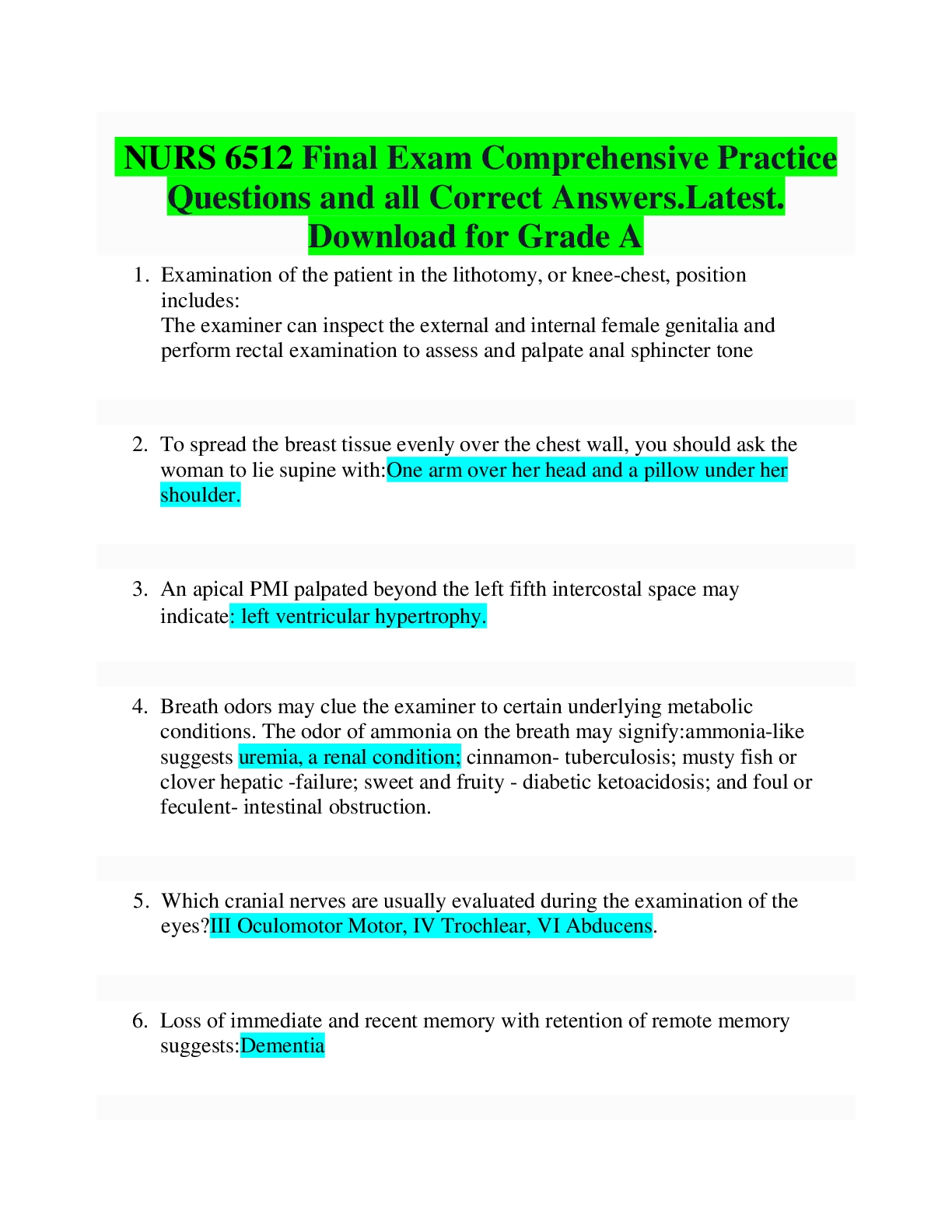
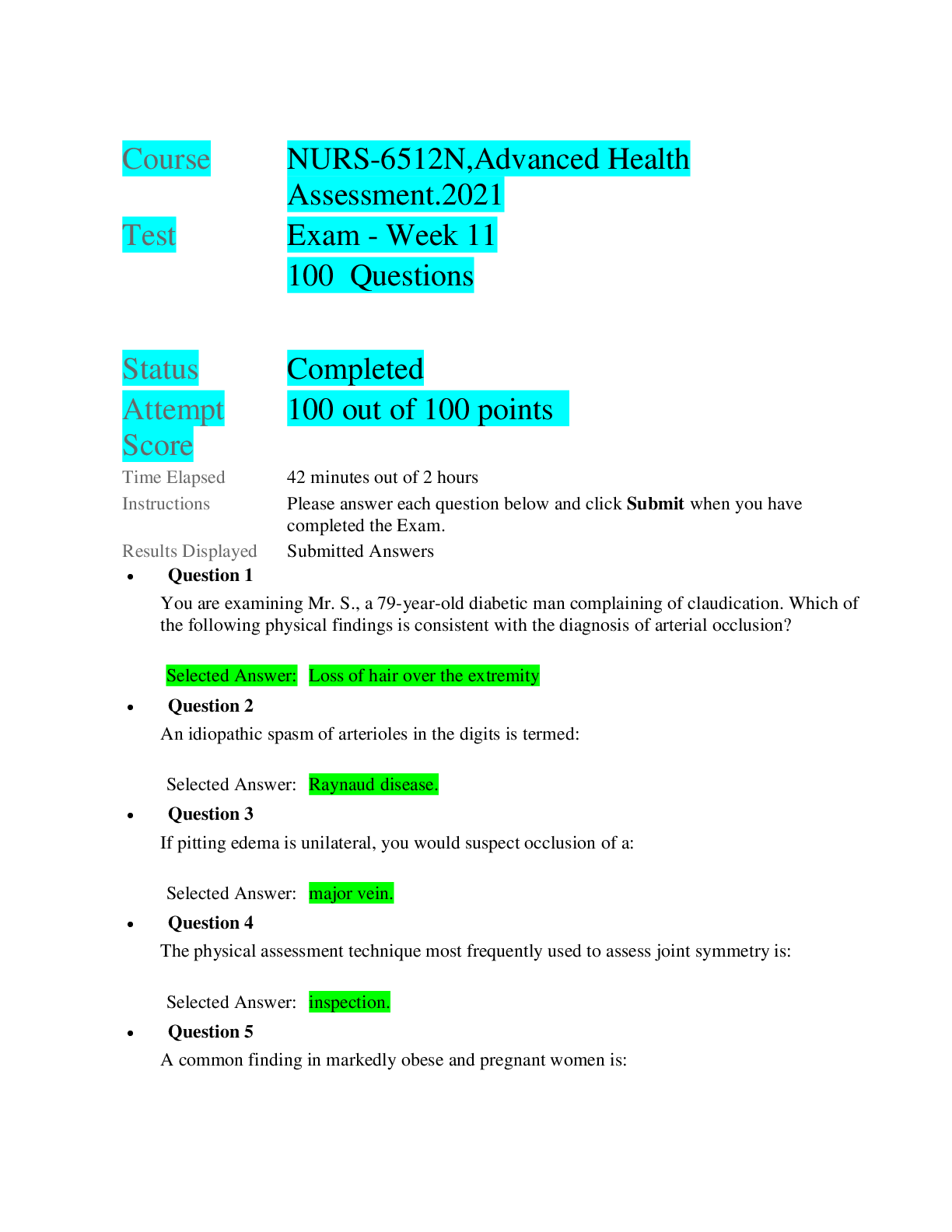

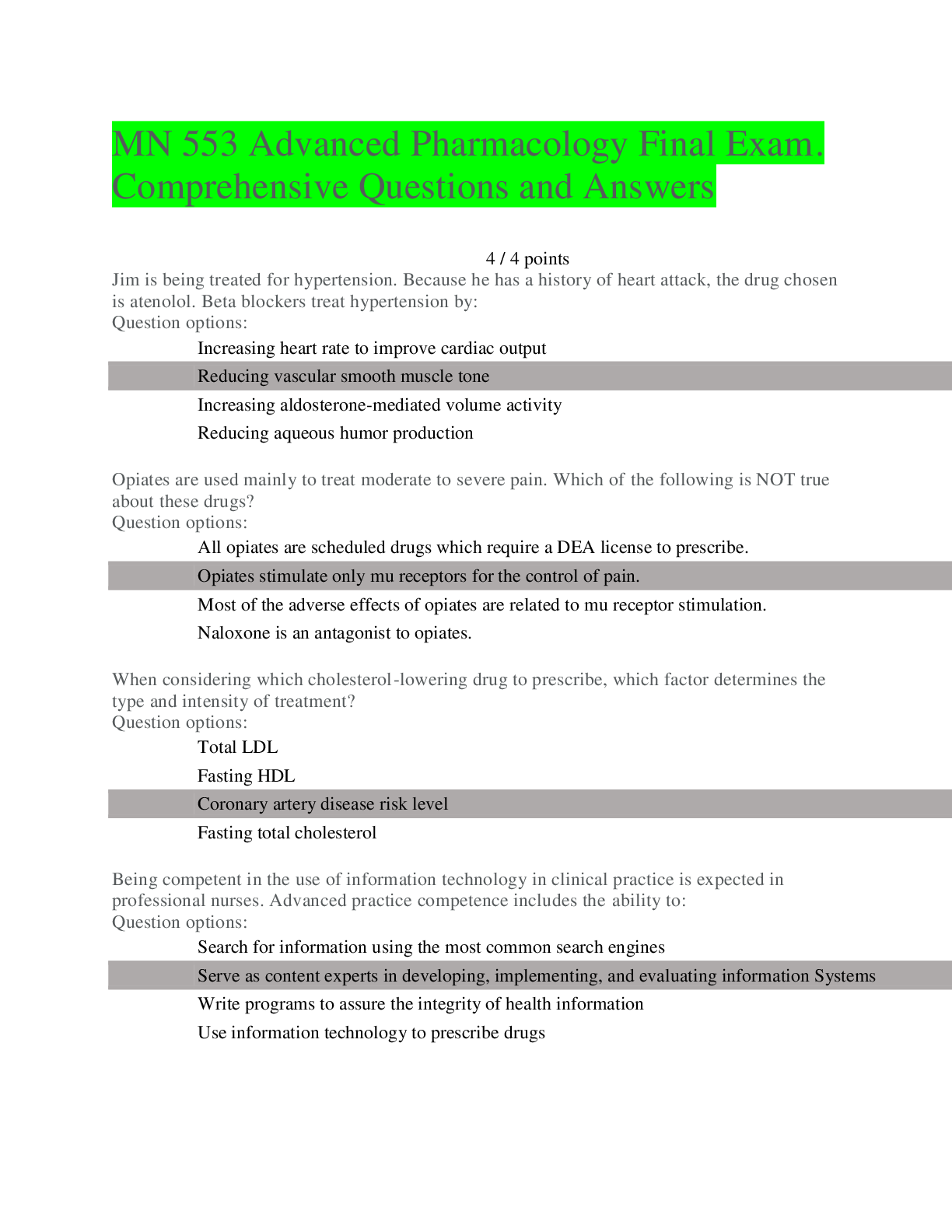
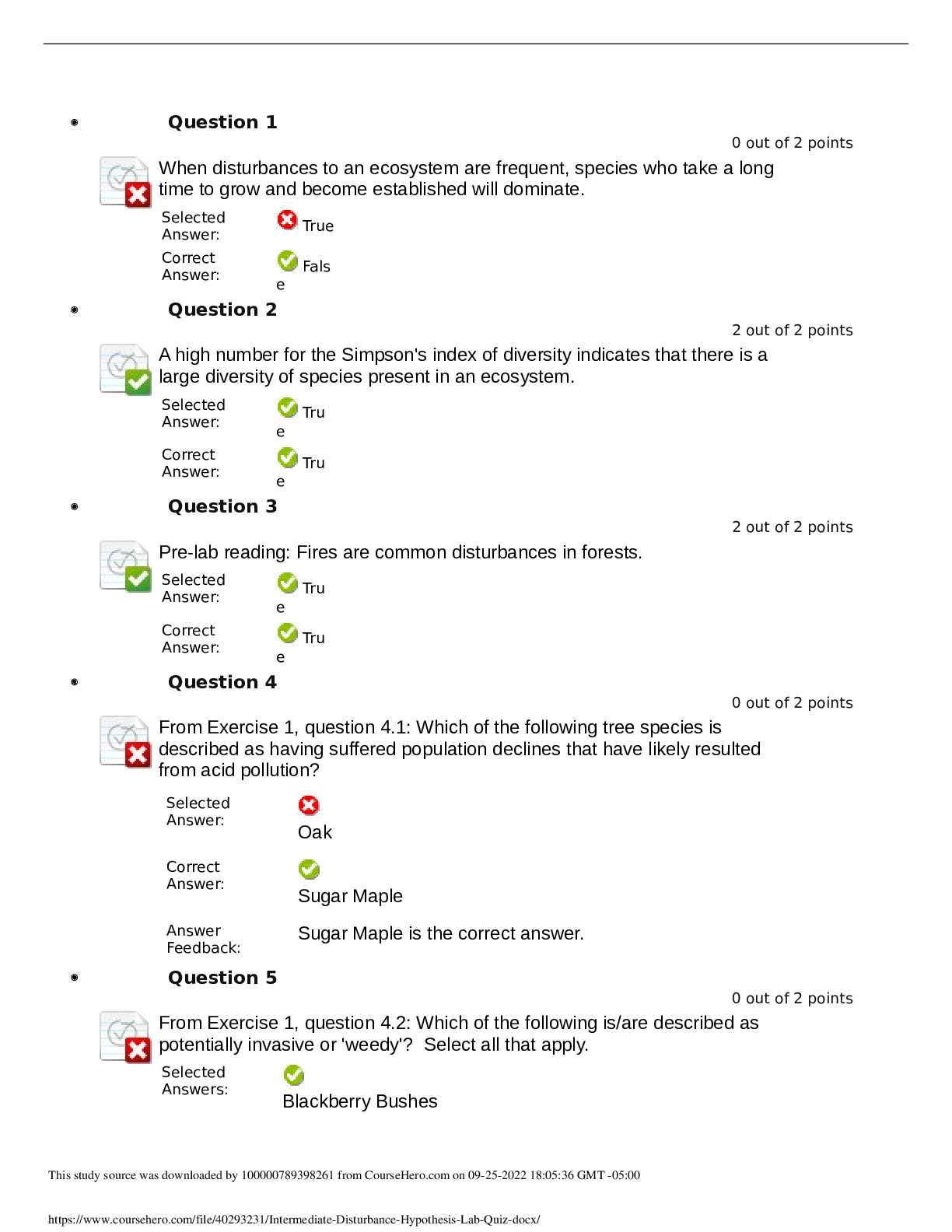
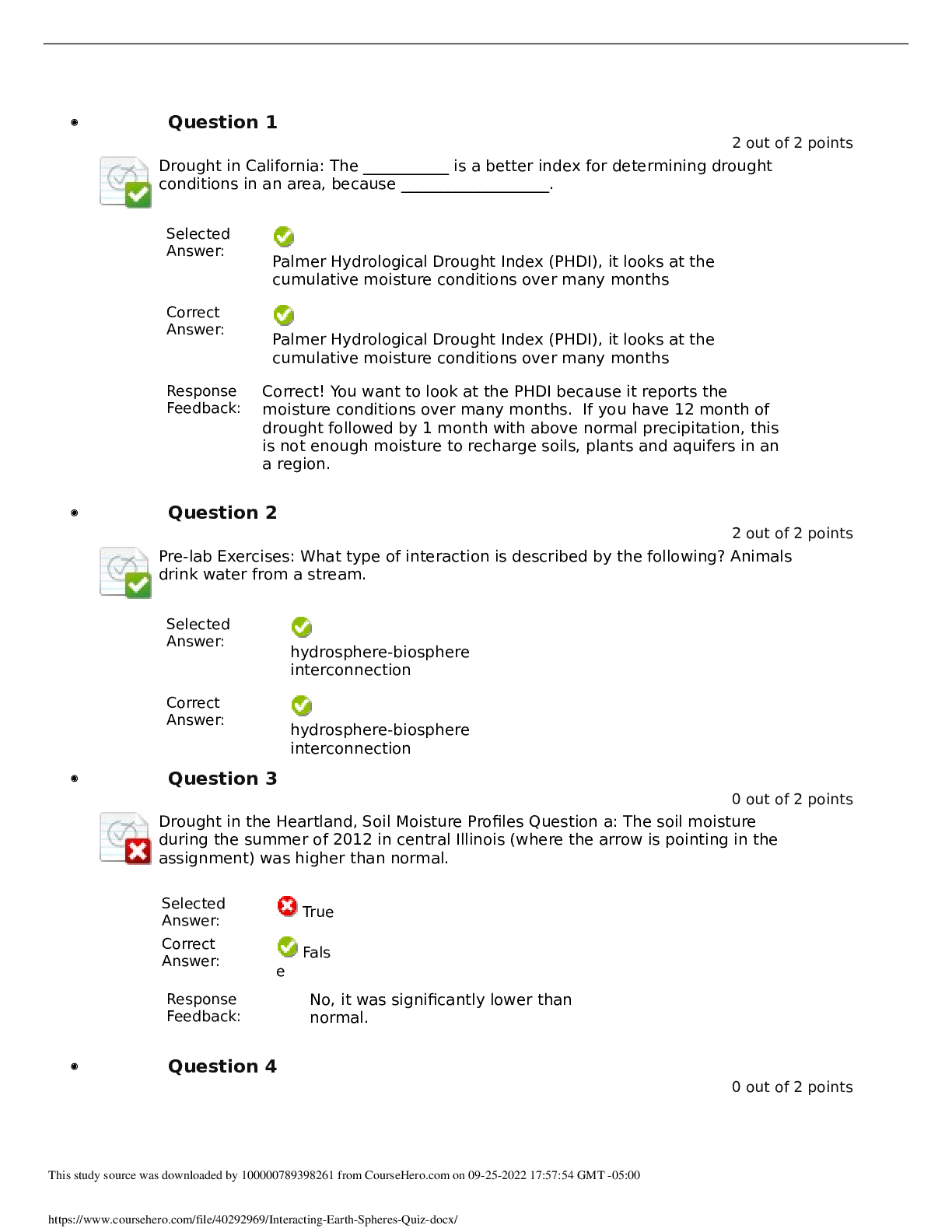
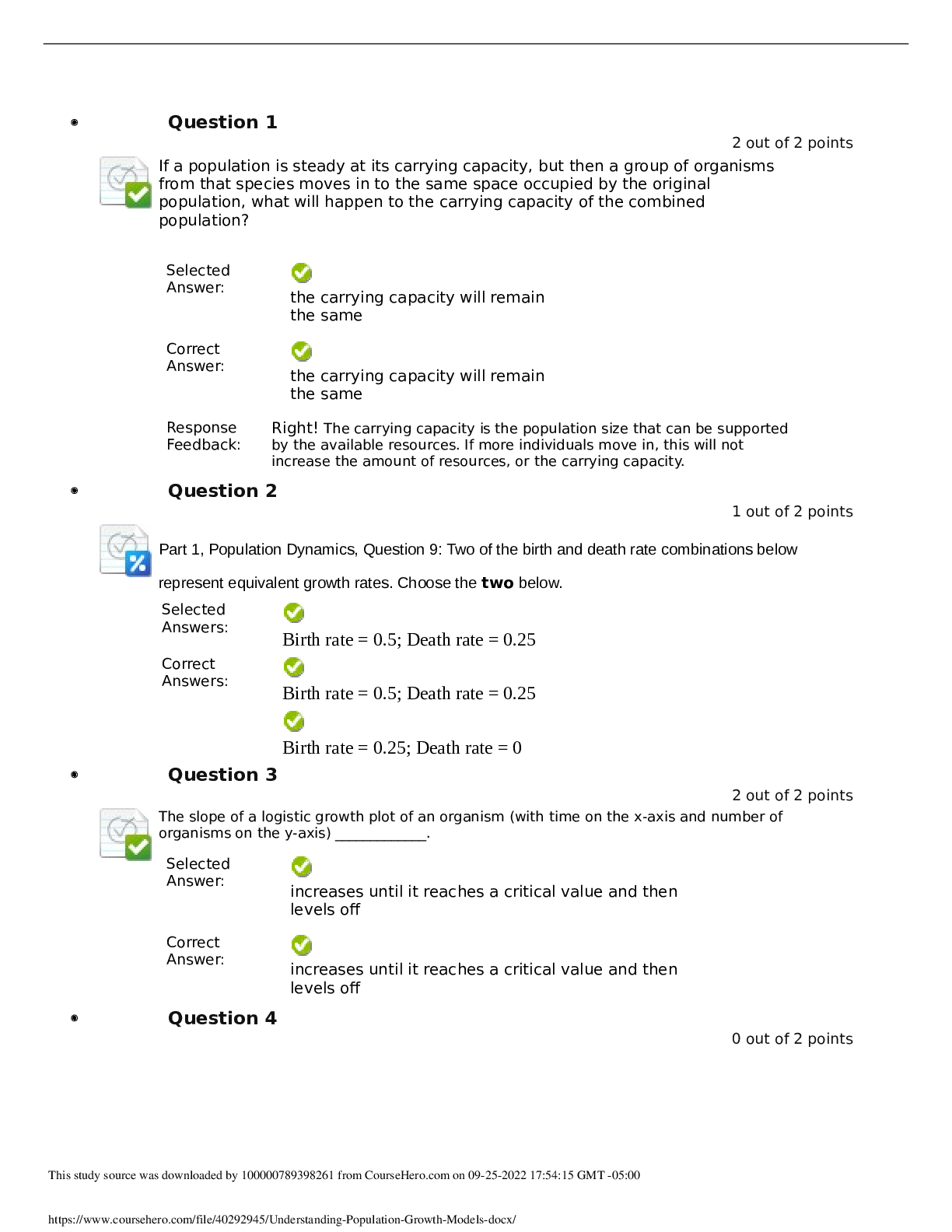
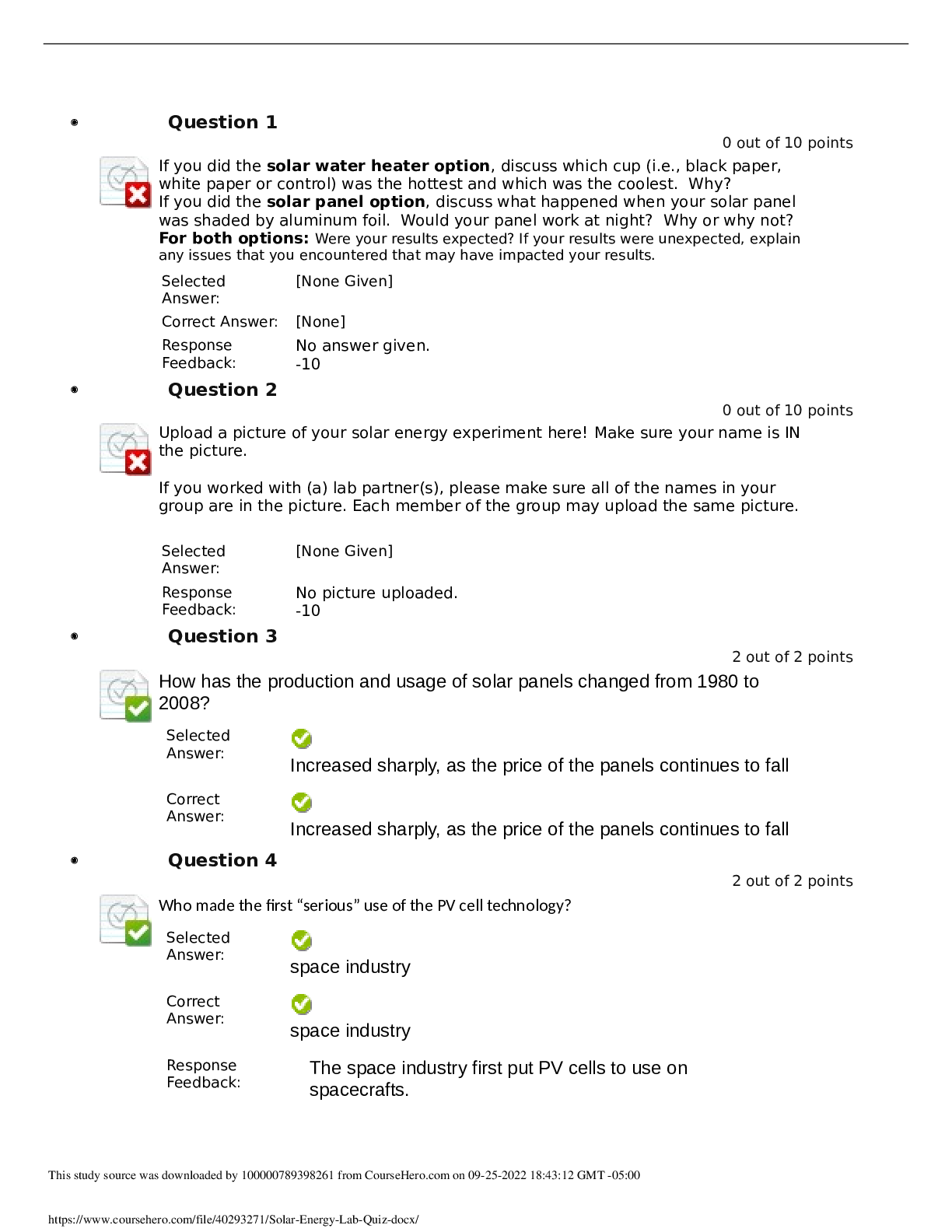
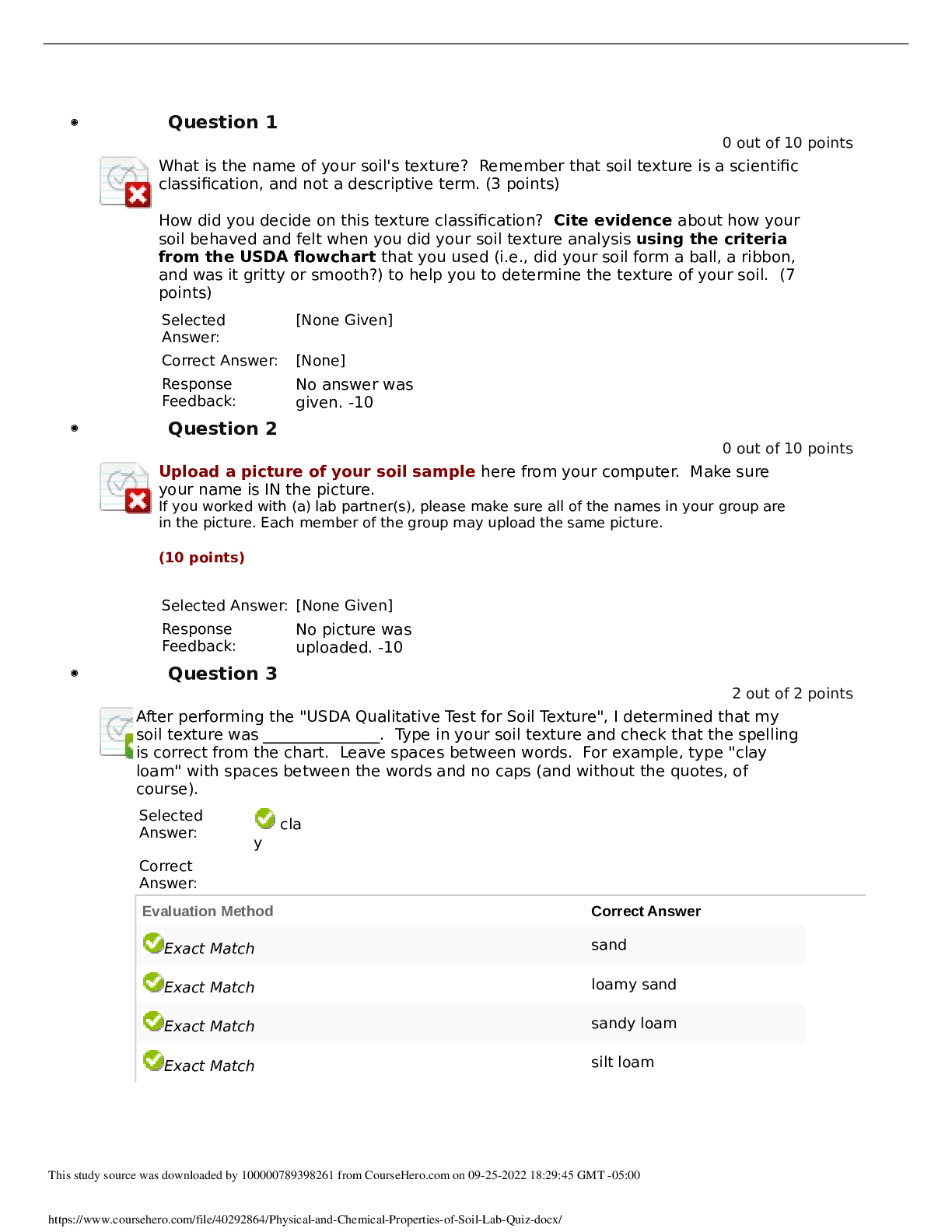
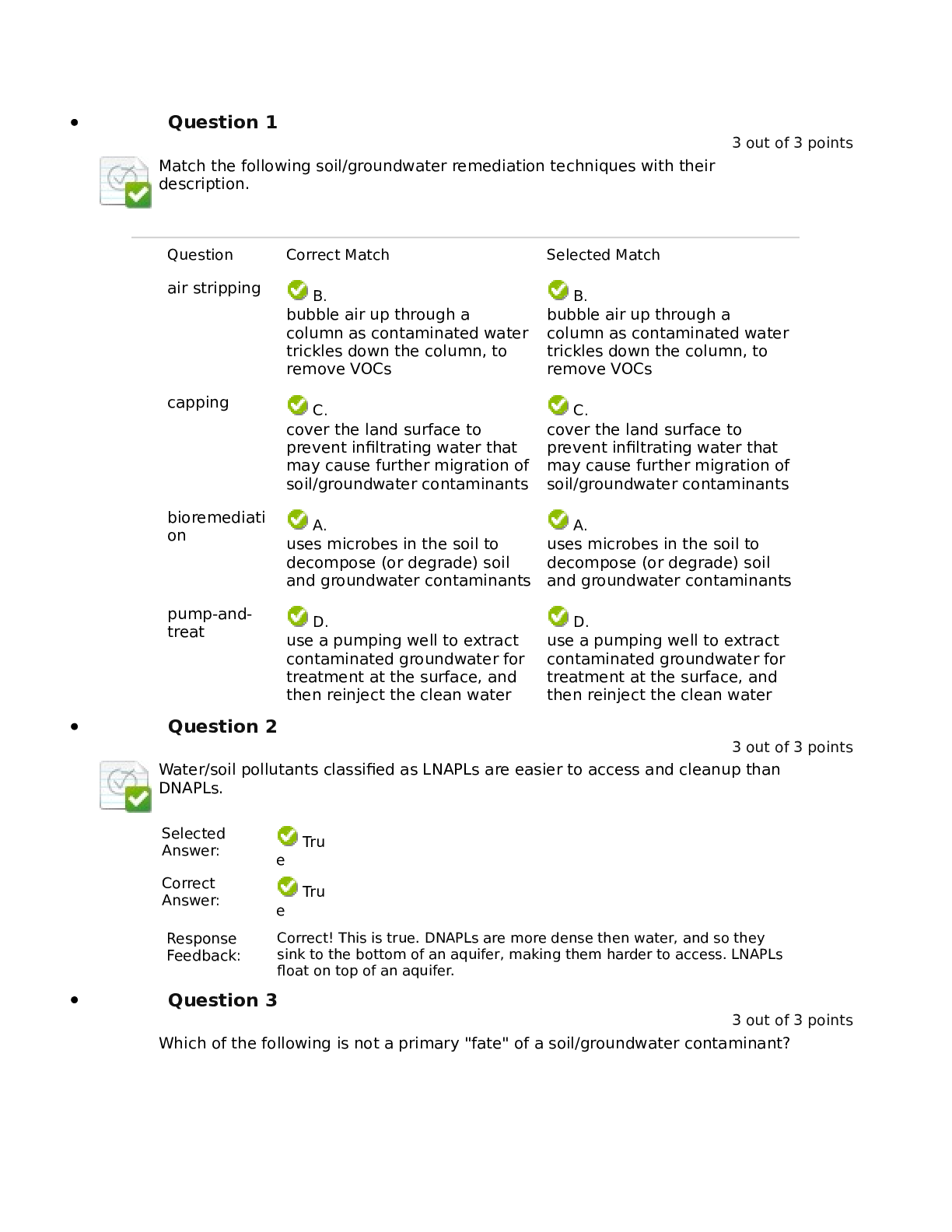
.png)

.png)

.png)
 Correct Study Guide, Download to Score A.png)
 Correct Study Guide, Download to Score A.png)

